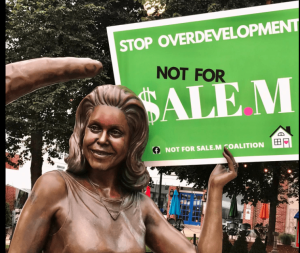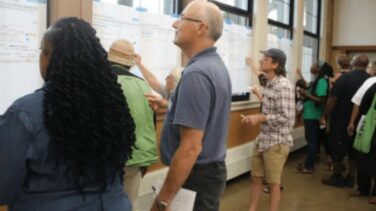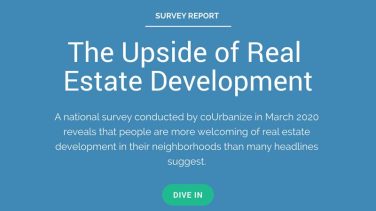
Despite a housing crisis in many U.S. cities, building new housing stock for low-income and middle class families continues to be a huge challenge. This is, in large part, due to the well-documented NIMBYism (“not in my backyard”) that plagues these efforts.
It’s a recurring theme: people say they support affordable housing but then sing a different tune when it’s in their neighborhood. Why is this? Misinformation, lack of information, or bias.
While there’s no quick fix for overcoming the NIMBYism that prevents good, community-focused projects from being built, there are ways to tackle NIMBYism head on.
Here’s how to engage with NIMBYs and diffuse opposition – and activate what we call ‘silent supporters.’
-
- Engage early & often. There’s a tendency to want to avoid engaging with the community. If community members don’t know about the project, they can’t organize in opposition to it, right? This idea is fundamentally flawed. By engaging early, project teams set the tone for the project – and have the opportunity to dispel rumors before they spread. Take the temperature of the community, understand the big issues and concerns, and let your findings guide subsequent messaging.
- Educate. When you hear “affordable housing,” what image comes to mind? For many, it’s not a pretty one. Affordable housing often carries unwarranted social stigma that fuels the resistance towards affordable housing projects. NIMBY cries are often predictable: adding affordable housing stock will increase crime, strain local schools, and decrease property values for abutters. These concerns are rooted in racism and classism and couldn’t be farther from the truth. Addressing these claims early with fact-based resources is one of the most important and effective components of community engagement.
- Respond to legitimate concerns. Neighbors will have legitimate concerns about a project, like changes to parking and traffic patterns. Listen to them, respond to them, and address them. The most successful projects are ones that evolve based on legitimate community feedback.
- Be available for one-on-one chats. Community meetings can be unruly and groupthink can deter community members from thinking critically about a project. Give neighbors a chance to engage directly with project teams in a one-on-one setting. These conversations present a major opportunity to turn opponents of your project into champions for it.
- Showcase previous projects. Your team’s previous projects can be great tools to combat NIMBYism. Show how you’ve worked with community members and elected officials, as well as how you’ve managed your properties. Demonstrating how you’ve been a good neighbor in the past can help your team build credibility in a new neighborhood.
- Reframe it with a community context. Showcase the community benefits, connecting it to other social issues. How will existing community members benefit from a project? And how can the same project address disparities in the broader community? It’s not easy to get community members to empathize with others instead of considering only their own needs, but it’s powerful when it’s achieved.
While there’s no one-size-fits-all solution to overcoming NIMBY opposition to affordable housing projects, engaging and educating early and often are crucial to any good project’s success. These efforts are needed to bring high-quality, affordable housing to all communities.


